
Water determines the Great Lakes Region’s economic future
Climate change, geopolitics and business opportunities power a blue economy
In the early hours of a brisk Onaabani-Giizis (March) morning, Ben Belleau gently directs the bow of a steel fishing boat into the water, a motion that ripples across the clear glassy coat of the St. Mary’s River.
Belleau has fished and guided people around the area since he was a teenager in the late 1960s. He grew up in Garden River First Nation, an Ojibway community about a 20-minute drive east of Sault Ste. Marie, Ont. Our community is a place called Ketegaunseebee or Gitigaan-ziibi in Anishinaabemowin, named for the vegetables Anishinaabe grew near the shores and traded with settlers.
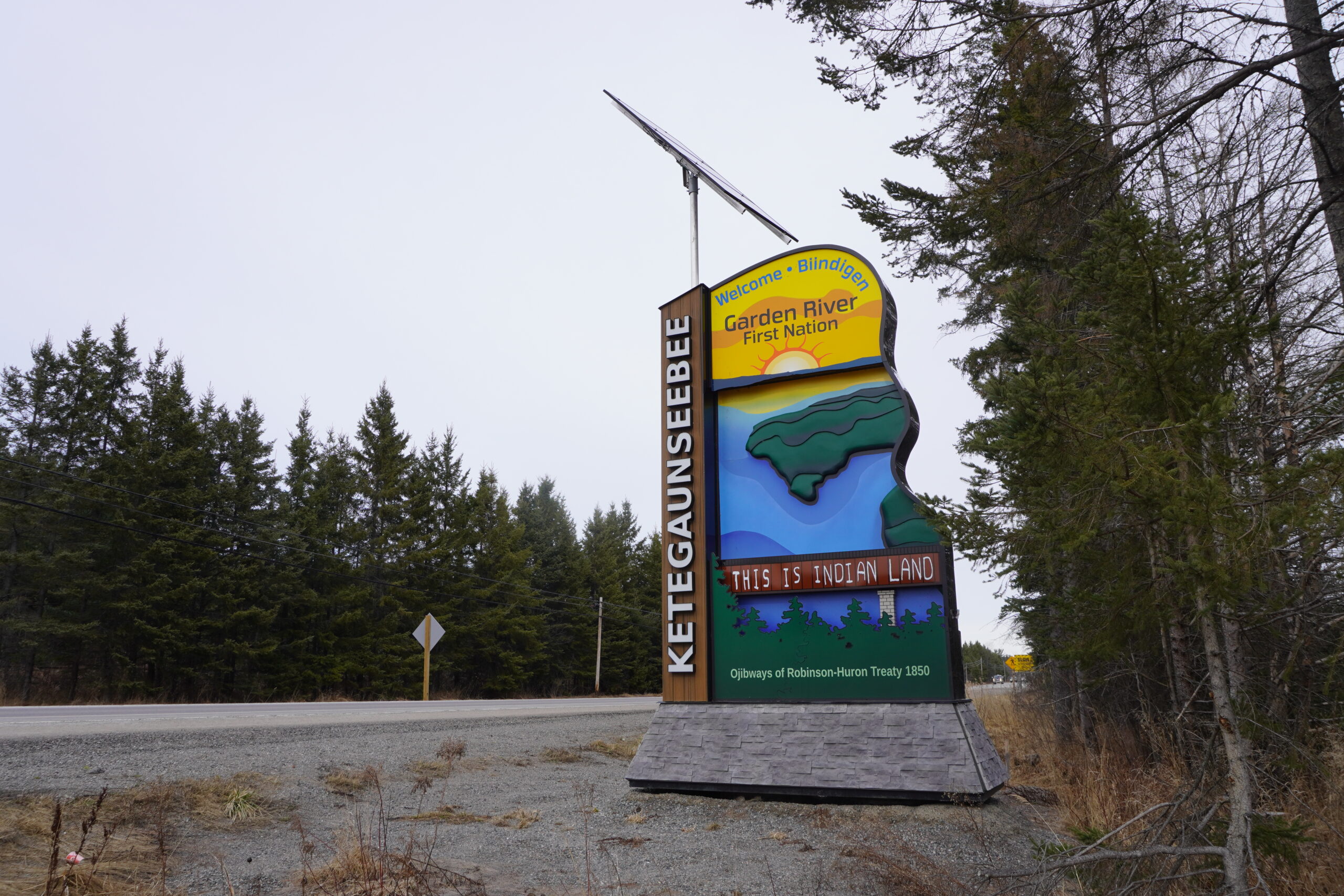
As the owner of Ben’s Bait & Tackle, a shop on the shore of the St. Mary’s, Belleau offers guided tours, organizes fishing derbies and, of course, sells bait and tackle. He knows the lands and water like the back of his hand and they know him just as well.
“Over the years, people wanted to know about the river, so I give them the history of how Garden River got to be,” he tells me, a history he shares to this day. For repeat customers, that usually means hearing the same tales more than once.
“In my 71 years I’ve never seen a winter this mild,” Belleau says, pointing out a small cluster of ice shards floating downstream as he settles into the driver’s seat. It’s warmer than it should be, the tail end of what is officially Canada’s warmest winter on record.
With the flick of a lighter, a thick curl of smoke envelops Belleau. He quickly turns the key to the boat, and a cloud puffs around the motor too. His wife, Glenda, watches from their house as we depart from the dock and head east from his shop — toward a parcel of land that Garden River First Nation has fought to reclaim for decades.
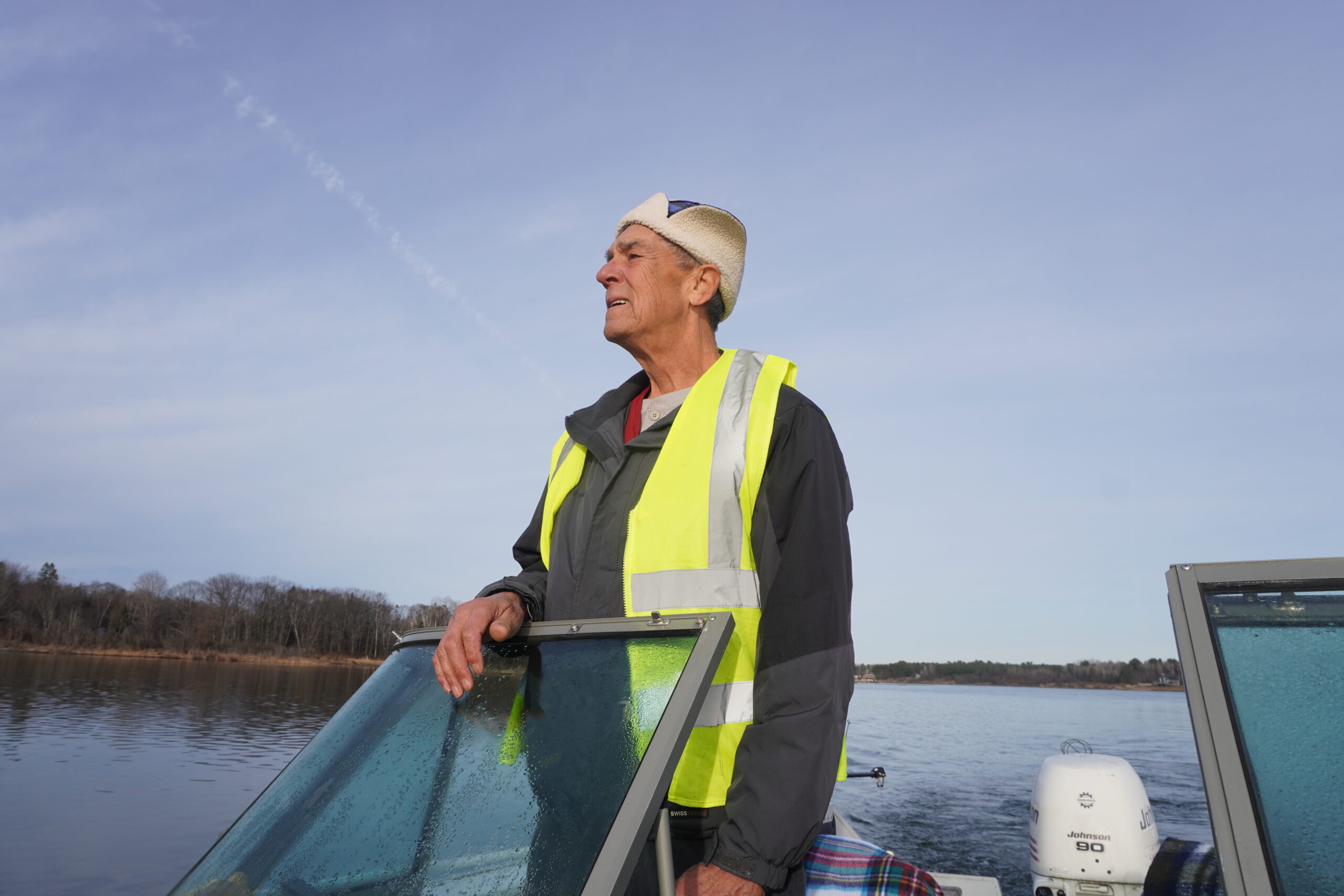
Squirrel Island is a 51-hectare isle located about 150 metres from the shore of Garden River. It’s one of a handful of islands in the St. Mary’s divvied up between Canada and the U.S, as the waterway serves as a border between the two. Growing up, when Squirrel Island came into view while out fishing, my brothers and I were always reminded the island was once Anishinaabe land.
“Back in the day, the island was used to store the horses. They were brought over there for safekeeping or to range free,” Belleau recalls, his head nodding and eyebrows furrowing as if he is remembering the story as it leaves his lips.
Ours isn’t the only First Nation whose homelands were taken. The late Secwépemc leader Arthur Manuel calculated that First Nation reserves comprise less than 0.2 per cent of Canada’s land mass. In the Robinson Huron Treaty of 1850, Garden River First Nation was originally promised a reserve extending over 54,000 hectares, including Squirrel Island. Today, it stands at less than half of that, just 20,700 hectares. Now, piece by piece, our nation is finally getting Squirrel Island back — but that’s only the beginning of a longer fight to truly reclaim it.
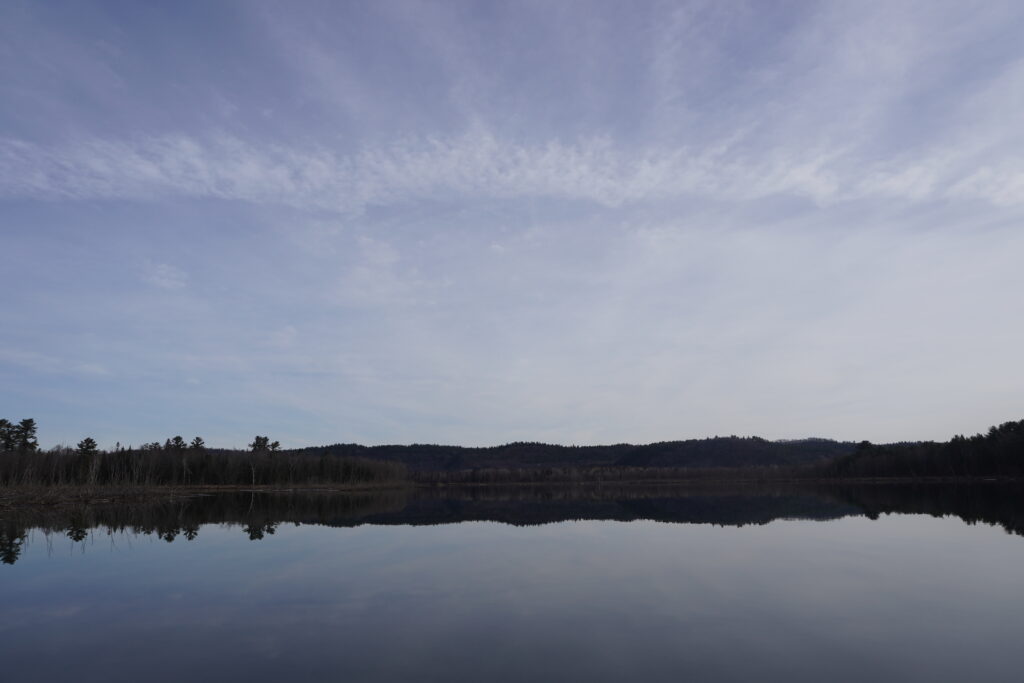
For centuries, Anishinaabe people hunted and lived in reciprocity on the lands surrounding Baawaating; in our language, this means the place of the rapids. In the 1840s, the Province of Canada took great interest in the wealth of mineral deposits, timber and opportunities for settlement in the area. It began issuing mining licenses, which the Anishinaabe did not consent to, and a Crown Lands Agent confiscated timber harvested by Garden River on Squirrel Island. The Anishinaabe viewed these actions as threats to their lands and jurisdiction. So, they called for a treaty.
In 1850, the Anishinaabe entered into an agreement with the Crown at Baawaating, called Sault Ste. Marie in English, creating the Robinson Huron Treaty. Chief Shingwaukonse and his Indian band were promised lands “extending from Maskinonge Bay, inclusive to Partridge Point, above Garden River inland ten miles, as well as Squirrel Island.” Nine years later, the Crown began to pressure the First Nation to relinquish lands set aside in the treaty for resource development and settlements — a series of surrenders known as the Pennefather Treaty. But according to Cole Nolan, Garden River’s historian, Squirrel Island was specifically noted to be retained by Garden River First Nation.
In 1869, 10 years after the Pennefather Treaty was signed, the band entered an agreement with an entrepreneur, Duncan G. Macdonald, to use the island as a site for a mill, on the conditions that all timber harvested only be sold to one man, who would hire and train Anishinaabe labourers. The mill was never built on the island, and since the requirements of the agreement were not met, the license was revoked. Even so, in 1888, the Bureau of Indian Affairs sold the island to Macdonald, who went on to sell the island to a Mr. Huston in 1905.
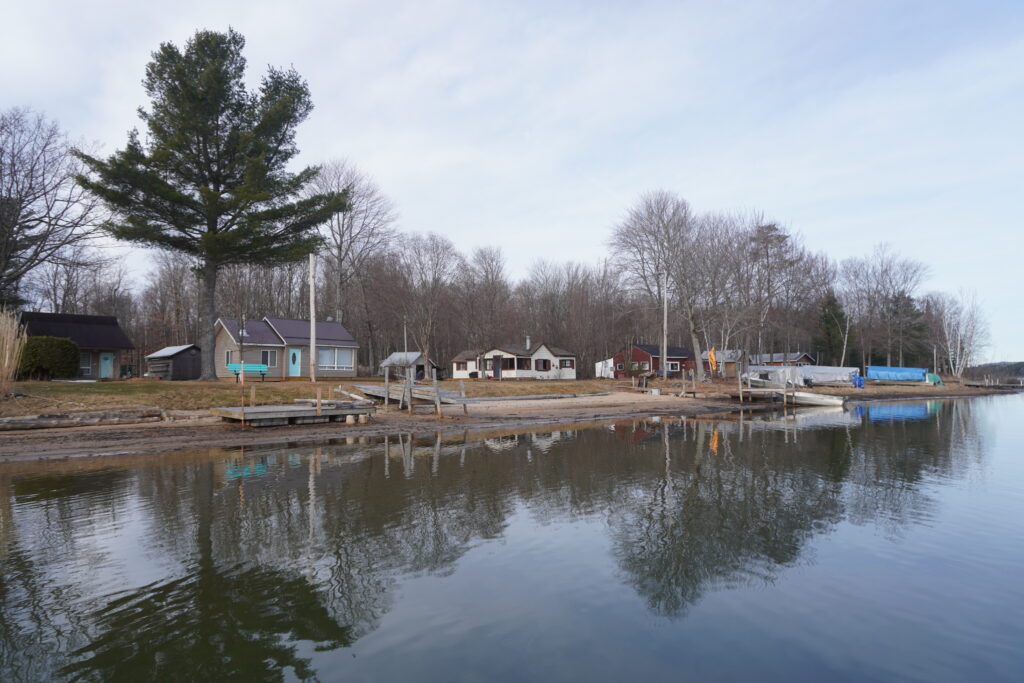
As Belleau and I make our way towards a dock on the sandy shore, a red four-wheeler stands out against the backdrop of white pines and colourful cottages closed for winter. Aside from the wildlife, Squirrel Island is usually vacant in mid-March. But Alfie Miller is an exception to the rule, and he’s patiently awaiting our arrival.
Squirrel Island has changed a lot since the early 1900s, when Huston bought it and began selling lots to future cottagers. Below the ground, power, telecom and water lines run through the island. At one point, there was a mini golf course on one property and even a pool at the largest cottage. A man from the nearby community of Echo Bay built a store and a gas bar on the water so boaters coming down the river could easily refuel.
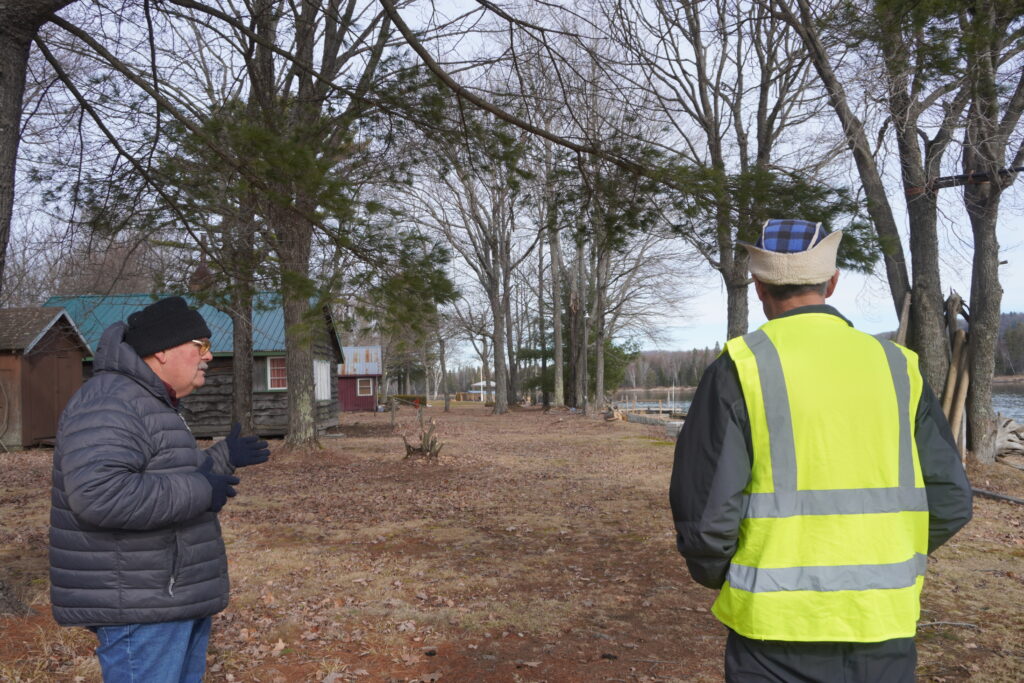
“They sold cigarettes and candy, and he put a gas pump in at the dock,” Miller recalls. “There was even a telephone booth right in front of that store.”
Miller has a long history with Squirrel Island. His family has been camping here for 83 years. During the Second World War, Miller’s father purchased a lot and began building whatever he could afford — initially, it was only a shed. Eventually, he built a small camp, which now includes a guest building for Miller’s grandchildren.
Miller says his father lived and breathed for his camp and that he would have rather lost his right arm than sell it. “We’ve always known that Garden got screwed out of [the land],” Miller says. “Years ago, somebody in Parliament must’ve said ‘There’s no one living there.’ ” But that doesn’t mean he and other cottagers don’t have their own enduring relationships with Squirrel Island, ones that must be considered as Garden River works to reclaim their land.
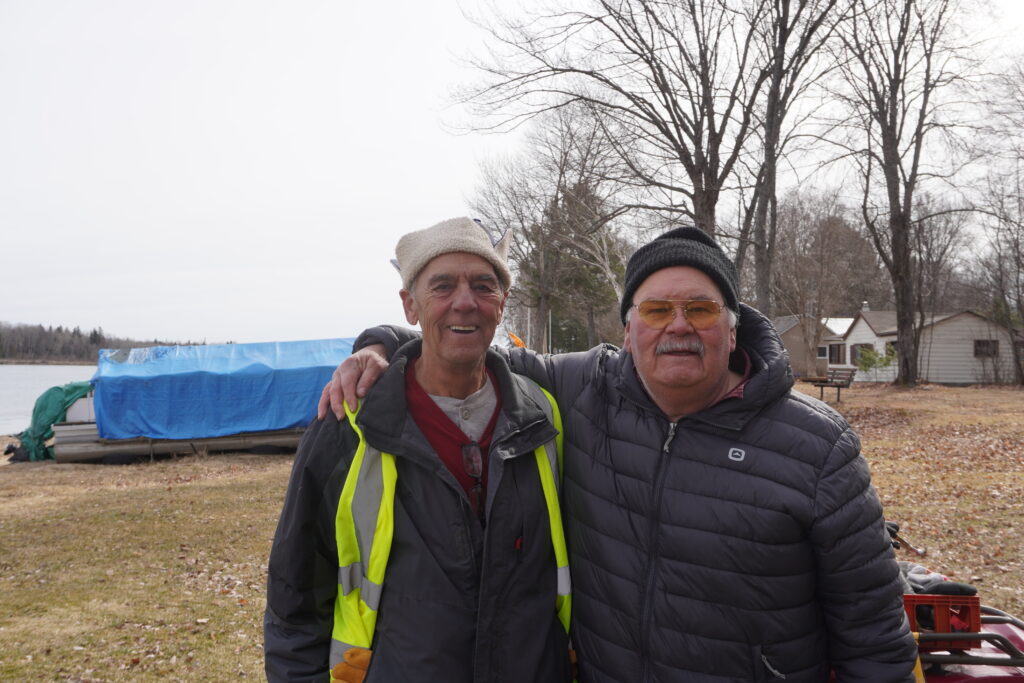
Until 1951, Section 141 of the Indian Act made it illegal for anyone, First Nations or not, to raise money for Indian legal claims. This was part of a concerted effort to extinguish Indigenous titles and advance the colonialist project, by preventing any First Nation from pursuing lengthy and expensive Aboriginal land claims.
After Section 141 was repealed, it took another 25 years for Garden River to file a claim against the federal government over the unjustified sale of the island. And it was another 11 years until a $2.53 million settlement was reached. This legal victory, finally achieved in 1987, didn’t return the island to Garden River. But it did allow the band to start buying back what was theirs by right, as well as distribute $1,000 to each member.
The buyback wasn’t exactly smooth sailing: there was resistance from cottagers, some of whom had lived there for decades. Some refused to sell, and some were scornful of the band’s efforts to reclaim what was promised in the treaty. In a 1987 Sault Star newspaper clipping, an unnamed cottager said that “Indian bands try to lay claim to whatever land they think is valuable.”
Above our heads, the sun peeks out from behind the clouds, cutting the cold sting of the morning air and signalling the passing time. “We should probably get a move on, eh,” Belleau says, pursing his lips at the backwoods beyond the lawns of the cabins. Loading onto the four-wheeler and its trailer, we set out toward the place I’m most eager to see: a garbage dump and dilapidated cottages. With Miller in the lead, we bounce along the bumpy paths and brush, stopping every so often to get a closer look inside the old buildings.
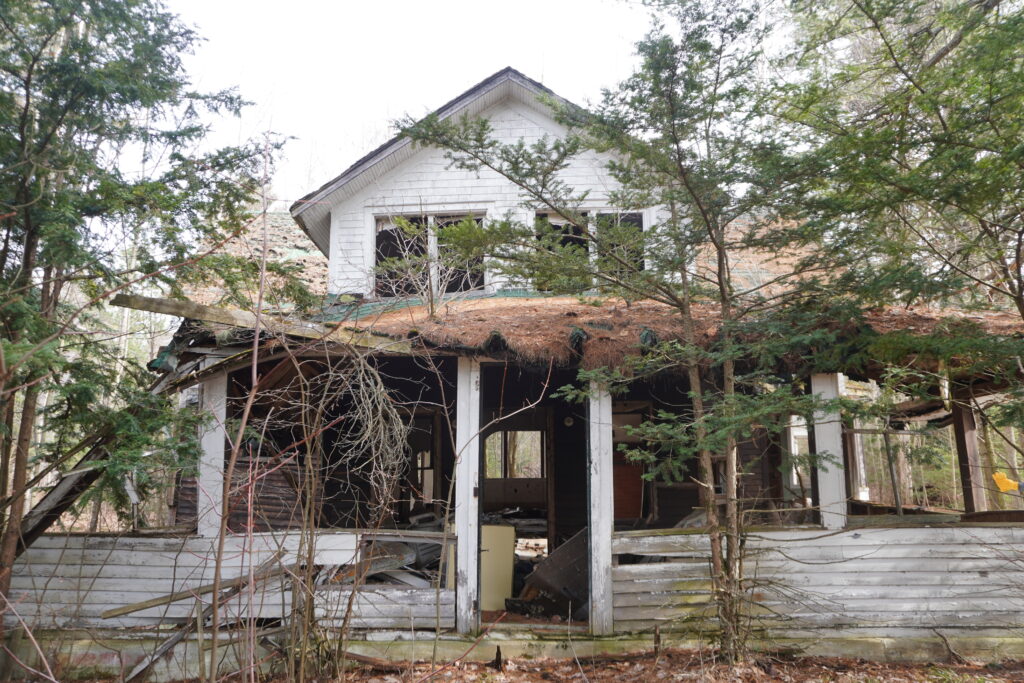
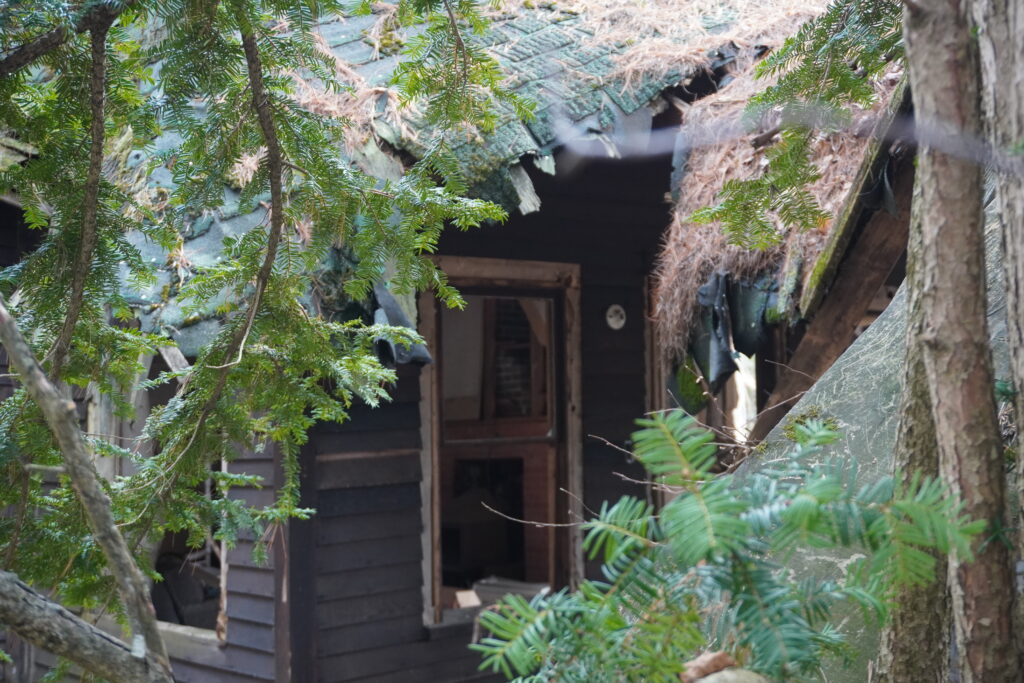
After Garden River First Nation purchased some of the cottages on the island, the band hired a few members to check on the properties. But with the passing of time and the turnover of band councils every two years, the cabins fell into disrepair. Today, once-beautiful places are a sad sight: windows are broken, old appliances are overturned and floors and ceilings are sagging. As I tread carefully in one, worried about the floor collapsing, I spot an old mattress that some small critters have made into a home and a fern sprouting up through a board — small reminders of the resilience of nature.
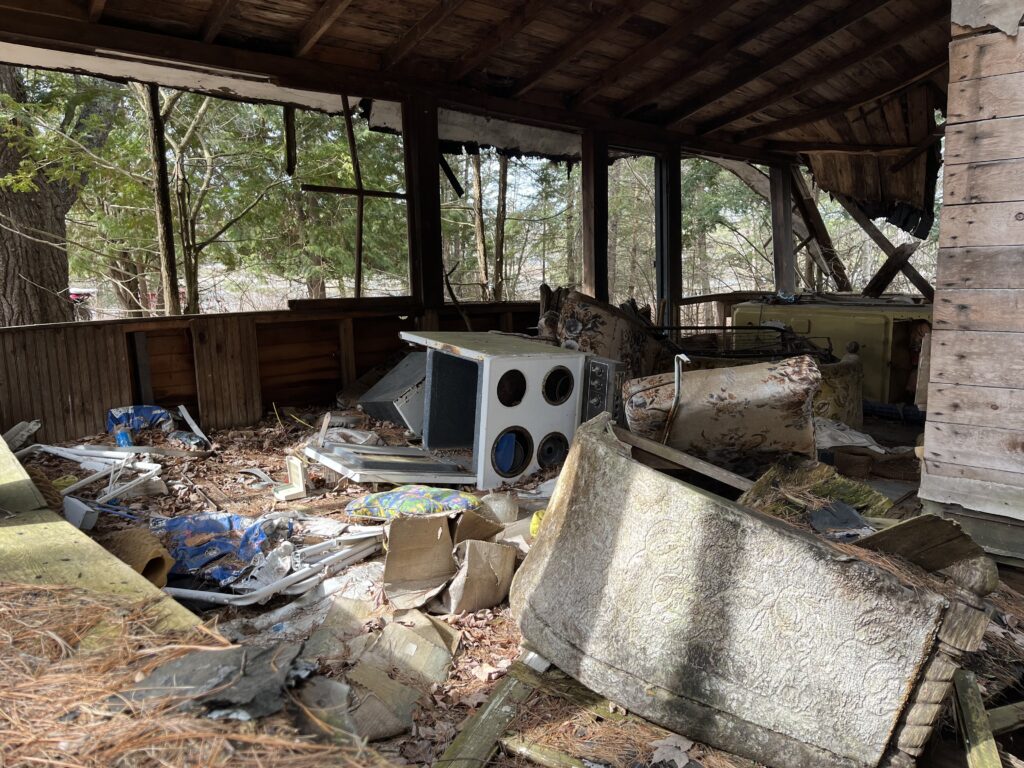
Miller recalls his father telling him about the horses that used to be here.“He’d hear them going around the island at night,” Miller tells us. “Sometimes you’d be lying in bed there and you’d hear a thunder of hooves go by.”
Reaching the island’s centre, we can see a fence that once penned the horses, which now marks the boundary of a garbage dump. Miller says a tall barn once stood adjacent to the dump, filled with marine supplies, but burned down years ago. Now, brightly-coloured old trucks, barbecues, folding chairs, go-karts and various pieces of outdoors equipment are heaped in large piles consumed by leaves and tangly brush. As I wonder how all these objects arrived here, a more important question occurs to me: how is this mess going to be cleaned up?
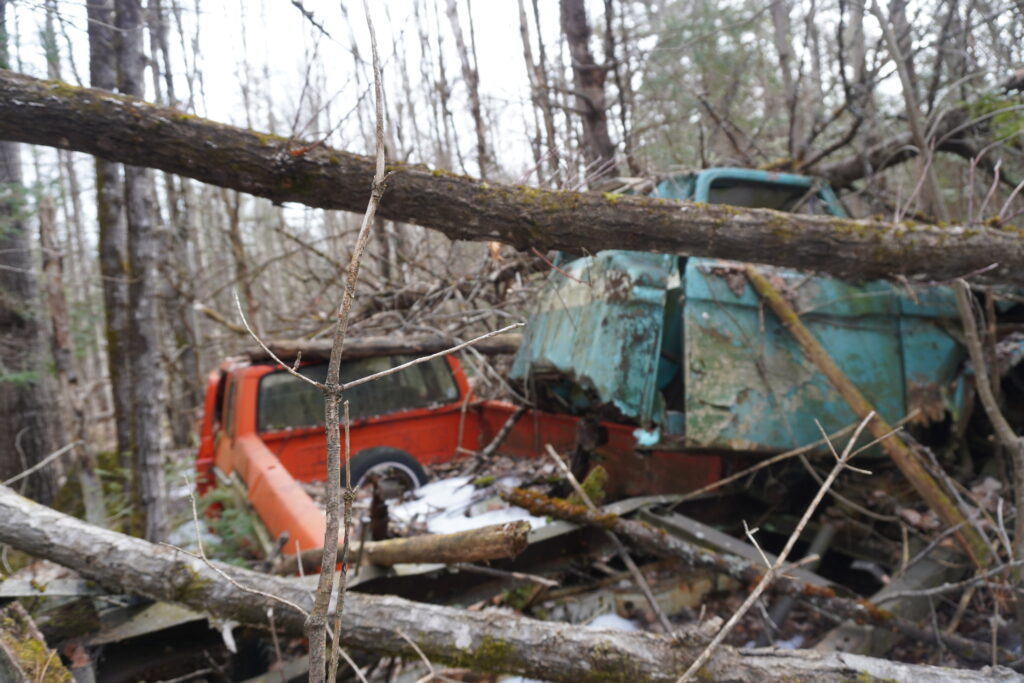
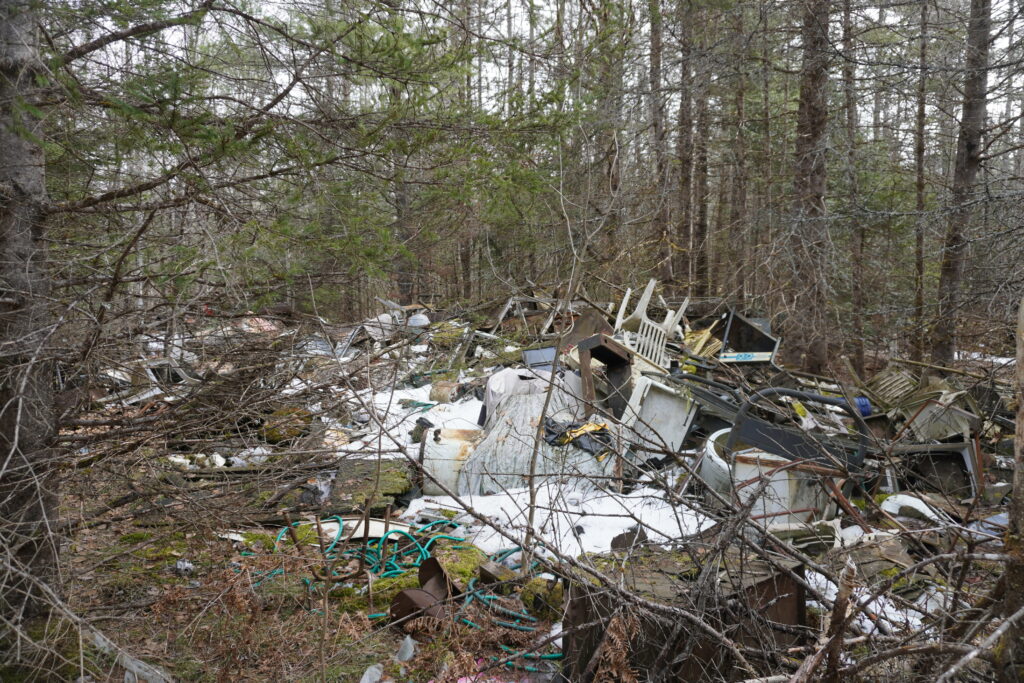
As the remaining cottagers get older, questions are arising over the fate of their properties. Karen Bell, Garden River’s Ogimaa Kwe, the Anishinaabemowin term for a female chief, says the lawyers and cottagers have agreed on a set of terms, which give the First Nation the right of refusal if a property is being sold or inherited.
Miller, who is now 73, inherited his father’s property on the island with his younger sister. Though the agreement applies to his cottage, he’s sanguine about what it will mean for him and his family in the future. “What’s going to happen is going to happen, but you can’t worry about it,” he says he told his daughters. He isn’t concerned about Garden River forcing him or his fellow cottagers off the island, and he knows that reclaiming the island will be a long and gradual process.
Sitting at the head of the table with a portrait of the famous leader and warrior Shingwaukonse looking over her shoulder, Chief Bell says the band is currently negotiating with the provincial and federal governments about restoring the island. “The onus is on them to do the cleanup,” she explains, saying a barge will be required for the broken-down cottages and garbage dump. “The burden should not be on the nation and [the governments] understand that.”
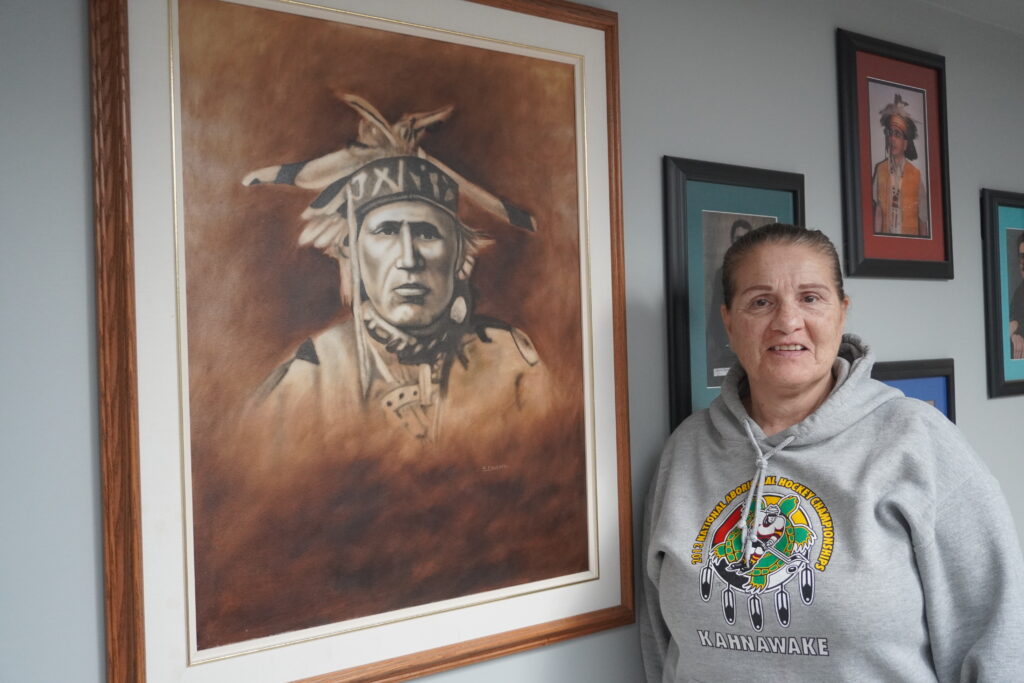
Although the band has bought some cottages, lands purchased by a First Nation are not automatically added to its reserve, even after a specific claim settlement like the 1987 ruling, which affirmed that Squirrel Island shouldn’t have been taken from Garden River in the first place. Chief Bell says the band will eventually be seeking an Addition to Reserve, a lengthy process of applying to the federal government to have the land granted reserve status.
This requires meeting specific criteria laid out by Indigenous Services Canada before being approved by the Minister of Crown-Indigenous Relations and Northern Affairs. The process of gaining approval can include doing environmental assessments, providing public access and utilities, consulting with municipal and provincial governments and addressing “third party interests.” For an area like Squirrel Island, which was divided into numerous privately-owned lots, it’s a particularly challenging process.
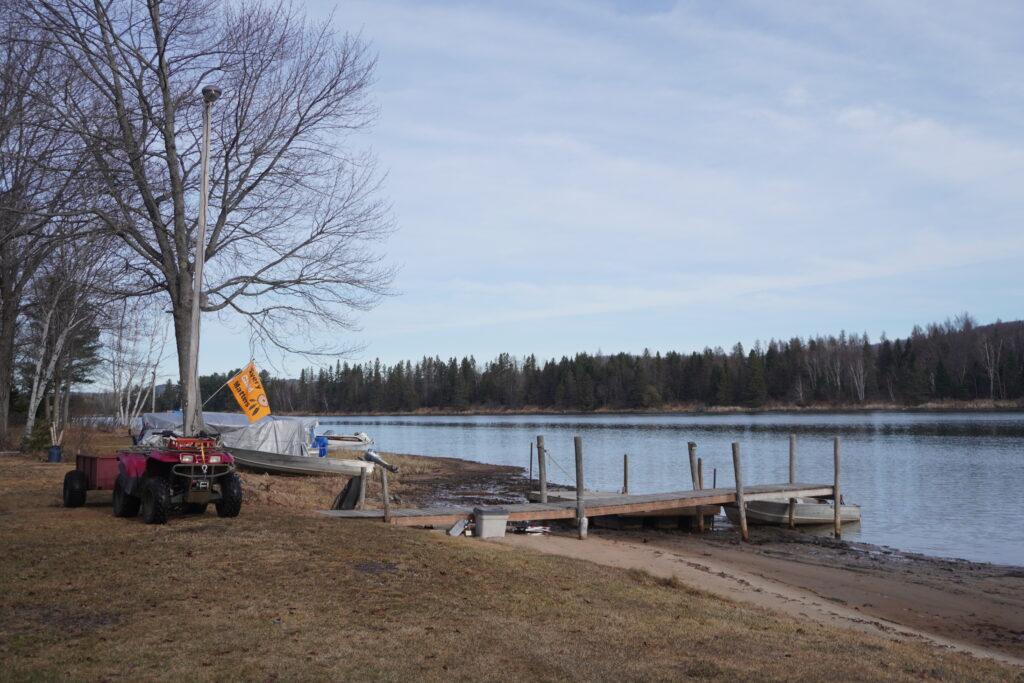
Garden River would like to reclaim the entire island eventually, but before that can happen, these outstanding issues must be resolved. Bell isn’t deterred by the challenges ahead. “Indigenous people are here for the long haul,” she declares. “We’re not going anywhere and so we have to work together in order to be able to co-exist.”
In May 2023, Garden River leadership travelled to Queen’s Park to file a lawsuit against the Ontario and federal governments for breaching the Robinson Huron Treaty of 1850. The nation alleges the government coerced the sale of over 30,000 hectares of Garden River’s lands promised in the Robinson Huron Treaty for the 1859 Pennefather Treaty.
The lawsuit claims the Crown breached its fiduciary duties by not defending Garden River’s interests in the lands. “We want to be compensated for it in the way of the society of today, we’re not going to get it back,” Chief Bell says, acknowledging that how the lands have been used and developed since 1859 has informed the nation’s demands. The lands that were sold now form the neighbouring communities of the Township of Macdonald, Meredith, and Aberdeen Additional. Some of the land remains undeveloped, and the nation is asking for its return. For the portions of the lands that cannot be returned, the lawsuit says “an order of damages or equitable compensation” should be paid to the First Nation for lost opportunity.
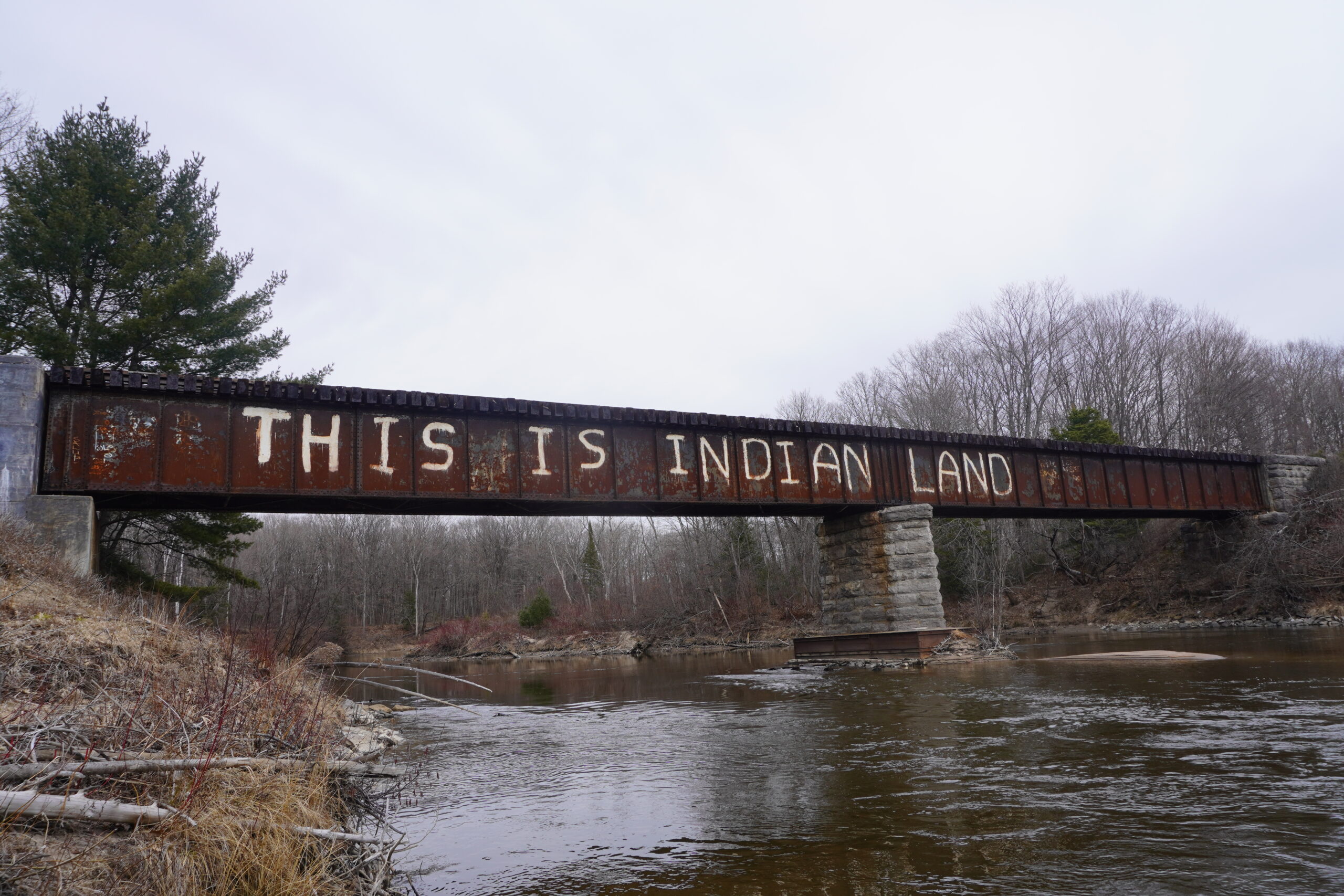
As Belleau and I head back to shore, Squirrel Island slowly disappears behind us. With whistling winds and a mist of water against my face, I close my eyes and imagine the island as an Anishinaabe land-based learning camp. I see scenes of sugar bushing, canoeing lessons, fishing and hide tanning camps. Then I picture the island cleaned up and simply returned to its natural state — unoccupied, except for the deer, beavers and other critters that call the island home.
After heading up from the dock, I get into my car and head down the old Highway 17B, a two-lane thoroughfare running through the First Nation. No one who drives on it can miss the distinct message graffitied in white paint across the length of a nearby CP Rail bridge. “THIS IS INDIAN LAND,” it declares — a truth the members of Garden River First Nation, and Indigenous communities across the country, know and have always known. The longstanding and ongoing fight to reclaim promised lands does not end here.
Updated on June 6, 2024, at 3:00 pm. PT: This story has been updated to correct the name of Alfie Miller, not Alfie Huckson as was previously written. We also have removed a misquote by Miller. The Narwhal regrets the error.
Get the inside scoop on The Narwhal’s environment and climate reporting by signing up for our free newsletter. On a warm September evening nearly 15...
Continue reading
Climate change, geopolitics and business opportunities power a blue economy

10 billion litres of sewage are dumped into Winnipeg’s lakes and rivers each year. Some...

Court sides with Xatśūll First Nation, temporarily halting Mount Polley mine waste expansion
